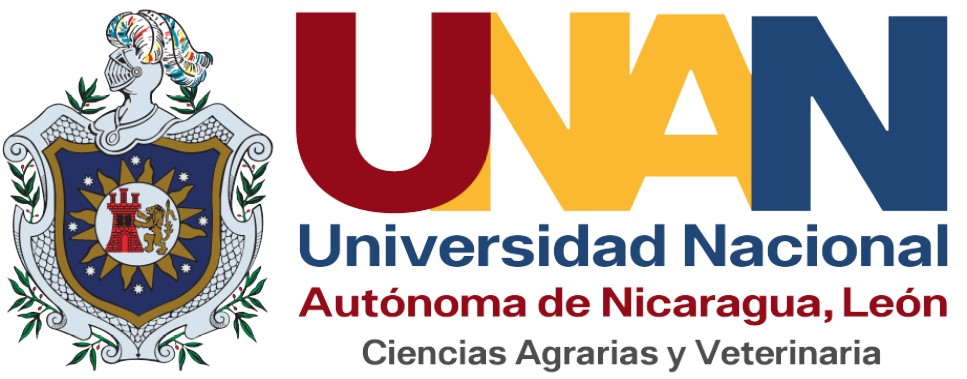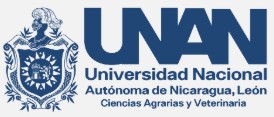Model of an agricultural observatory for climate change in the northern department of Santander, Colombia
DOI:
https://doi.org/10.5377/ribcc.v6i11.9840Keywords:
Observatory, Climate Change, Agriculture, Education, risk managementAbstract
The impacts of climate change on the agricultural sector require the implementation of technical tools for recording, systematizing, managing and disseminating information among the social actors involved. The Model of the Agricultural Observatory for Climate Change in the Department of Norte de Santander (OACC), Colombia), carried out between 2019 and 2020, aims to monitor the behaviour of the sector in the face of the impacts of climate change in three study stations: plain (220 masl), mountain (1.051 masl) and moor (2.400 masl). The design of the Model involved the development of the following phases: a) Characterization of the potential agricultural areas for the installation of the OACC in the department; b) Determination with the agricultural social actors of the region of the relevance, location and characteristics of the OACC; c) Design of the Observatory model; d) Analysis of the technical feasibility of the OACC model; e) Study of the financial sustainability of the OACC and; f) Validation of the model with experts in the environmental, agricultural and social areas. The Observatory will use information from public and private institutions and those derived directly from the 3 study stations to generate environmental, economic, productive and social indicators, as contextualized and relevant inputs for the formulation of policies, plans and programs for socio-economic development, education, research, risk management and information for social actors of the entity.
Downloads
Metrics
References
Chabbi, A., Lehmann, J., Ciais, P., Loescher, H. W., Cotrufo, M.F., Don, A., San Clements, L., Schipper, J., Six, P., Smith y Rumpel, C. (2017). Aligning agriculture and climate policy, Nature climate change, 7, 307–309. doi: https://10.1038/nclimate3286
Engel, S. y Muller, A. (2016). Payments for environmental services to promote “climate‐smart agriculture”? Potential and challenges, Agriculture Economics, 7(1), 173-184. doi: https://doi.org/10.1111/agec.12307
Febriani, L. y Lokantara I. G. (2017). Community participation towards the value of traditional architecture resilience, on the settlements’ patters in Tenganan village, Amlapura, IOP Conf. Ser.: Earth Environ. 99(1), 1-9. doi: https://10.1088/1755-1315/99/1/012018
García, M. y Fairen, V. (1980). Estructuras disipativas. Algunas nociones básicas/1, El Basilisco, 10, 8-13. Recuperado de http://www.fgbueno.es/bas/pdf/bas11002.pdf
Iglesias, A., Quiroga, S., Diz, A. y Garrote. L. (2011). Adapting agriculture to climate change, Economía Agraria y Recursos Naturales, 11(2), 109-122. doi: https://doi.org/10.7201/earn.2011.02.05
Instituto Interamericano de Cooperación para la Agricultura, IICA, 2016. Observatorio de Gestión del Riesgo y Seguros Agropecuarios de las Américas. Recuperado de http://www.fao.org/family-farming/detail/es/c/1054547/
Intergovernmental Panel on Climate Change (IPCC). (2005). Guidance Notes for Lead Authors of the IPCC Fourth Assessment Report on Addressing Uncertainties. Recuperado de https://wg1.ipcc.ch/publications/supportingmaterial/uncertainty-guidance-note.pdf
Kammen, D. (2013). Complexity and interdisciplinary approaches to environmental research, Environ. Res. 8(1), 1-4. doi: https://doi.org/10.1088/1748-9326/8/1/010201
Maturana, H. (1995). La realidad: ¿Objetiva o construida? I. fundamentos biológicos de la realidad, México: Antrophos
Observatorio Pirenaico del Cambio Climático, OPCC, 2010. Recuperado de https://opcc-ctp.org/eu
Peixoto, J., Nunes, M., Baliza, D., Pereira, S., Parreiras, S. y Rosa, B.T. (2017). Cafeicultura familiar e as boas práticas agrícolas, Coffee Science, Lavras, 12(3), 365-373. doi: https://doi.org/10.25186/cs.v12i3.1298
Pérez, J. (2010). Diseño de un observatorio ambiental para el sector de curtiembres. Estudio de caso: Curtiembres de Villa Pinzón y Chocontá. (Tesis de Maestría), Universidad Nacional, Colombia. Recuperado de http://www.switchurbanwater.eu/outputs/pdfs/W4-2_CBOG_PHD_MSc_Diseno_de_un_Observatorio_Ambiental_-_Rojas.pdf
Programa de Bosques Andinos (2020). Observatorio de bosques andinos de Antioquia. Recuperado de https://www.observatoriobosquesantioquia.org/
Saj, S., Torquebiau, E., Hainzelin, E., Pagès, J. y Maraux, F. (2017). The way forward: An agroecological perspective for Climate-Smart Agriculture, Agriculture, Ecosystems and Environment, 250, 20-24. doi: https://dx.doi.org/10.1016/j.agee.2017.09.003
Soteriades, A.D., Murray-Rust, D., Trabucco, A. y Metzger, M.J. (2017). Understanding global climate change scenarios through bioclimate stratification, Environmental Research Letters, 12(8), 1-10. doi: https://doi.org/10.1088/1748-9326/aa7689
Supadli, I., Saputri, A. y Mawengkang, H. (2018). Mitigating Local Natural Disaster through Social Aware Preparedness Using Complexity Approach, IOP Conf. Ser.: Mater. Sci. Eng. 300(1), 1-7. doi: https://doi.org/10.1088/1757-899X/300/1/012050
Williams, B. K. y Johnson, F. A. (2013). Confronting dynamics and uncertainty in optimal decision making for conservation, Environ. Res, 8(2), 1-17.doi: https://doi.org/10.1088/1748-9326/8/2/025004
Downloads
Published
How to Cite
License
Copyright (c) 2020 Ibero-american JournalL of Bioeconomy and Climate Change e-ISSN 2410-7980

This work is licensed under a Creative Commons Attribution-NonCommercial-ShareAlike 4.0 International License.
Copyright © 2025 Rev. iberoam. bioecon. climate change. National Autonomous University of Nicaragua León (UNAN-León), Knowledge Area of Agrarian and Veterinary Sciences / Specific Area of Agroecology and Agribusiness / Center for Research in Agrarian Sciencies. Academic Directorate. Research Department. Publication and scientific events Unit.












 EDITORIAL
EDITORIAL e-ISSN
e-ISSN


 COPYRIGHT
COPYRIGHT This work is licensed under a Licencia Internacional
This work is licensed under a Licencia Internacional 












